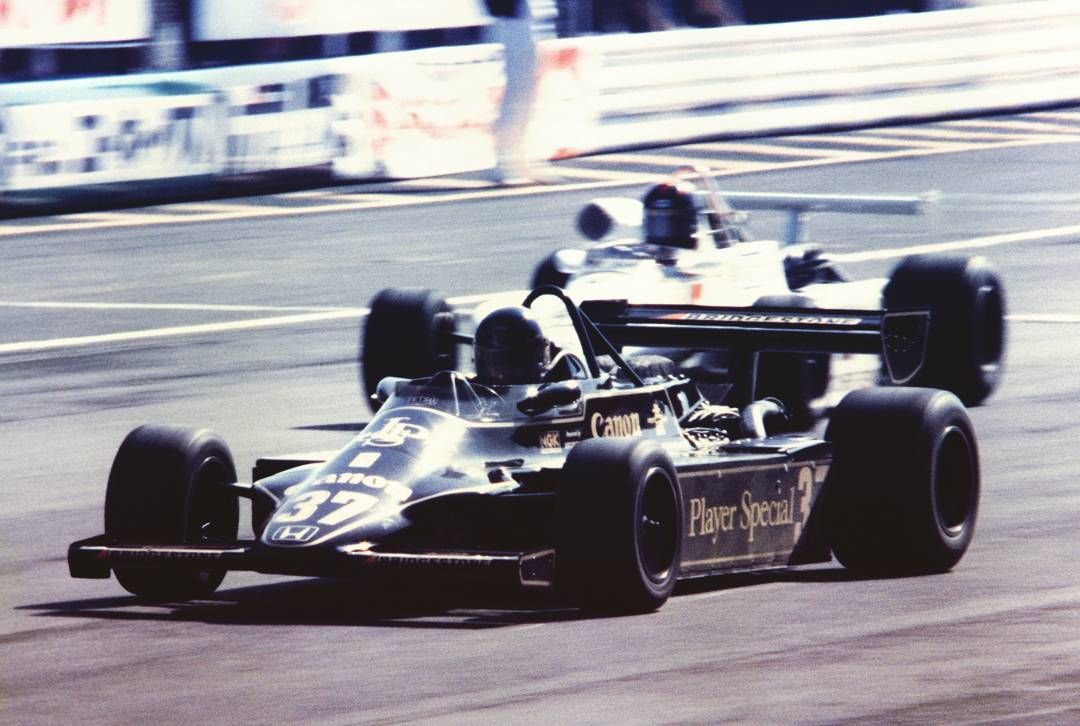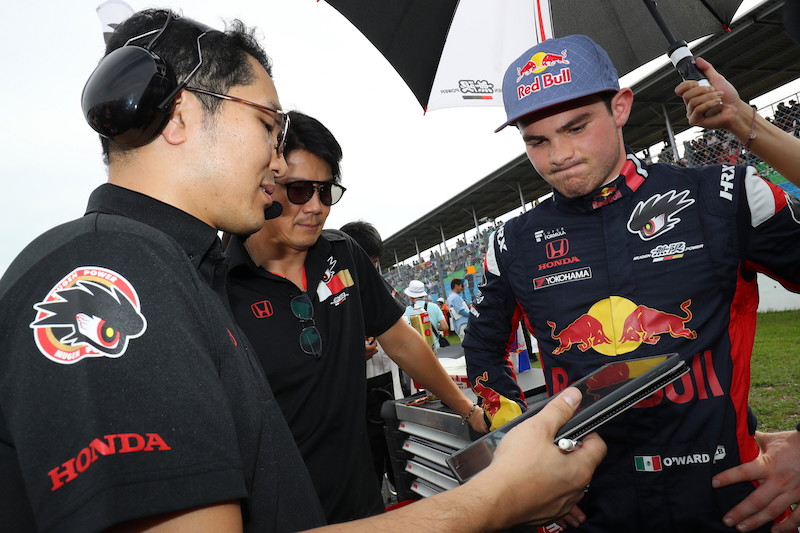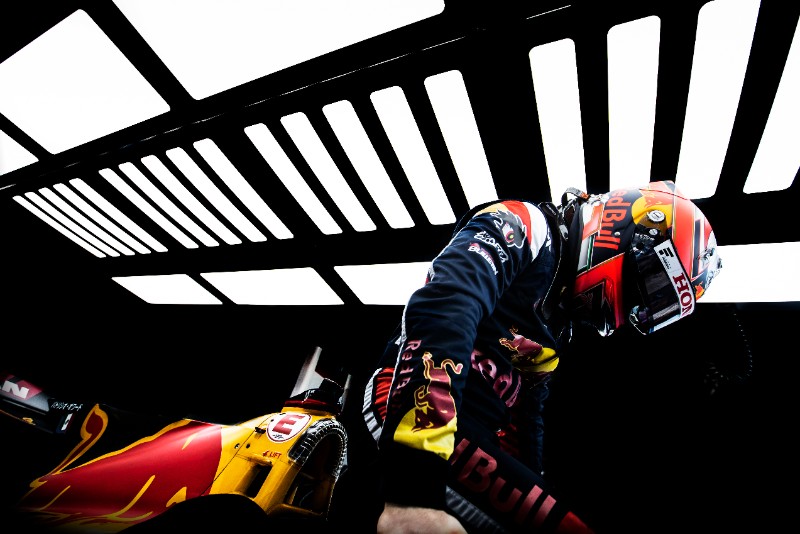
Photos: Super Formula
The 2020 season may be delayed, but Super Formula’s popularity is rising. What is the series about?
Back in the 1970s, when Formula 1 drivers were high-flying cultural icons as well as sporting ones, single-seater racing was actually one of the lesser known forms of motorsport in most parts of the world. Production car-based racing was usually the most popular, and reflected which cars sold well in different countries. Nations with manufacturers that built engines suitable for single-seaters then either had chassis builders or importers that could create market demand for that type of racing.
Big open single-seaters, usually positioned as being just below Formula 1 or an alternative to it, were wider spread then than they are now, and were introduced to Japan by the Japan Automobile Federation (JAF) with a national championship in 1973.
While Formula 2 cars from Europe made up the majority of the grid when it came to car count, and almost entirely in terms of engines, there were some local entries and an enthusiastic group of local drivers. Despite practically being an F2 series, the series was called Japanese Formula 2000 due to engine rules for its first five seasons and had local drivers win the titles.
In 1978 it was renamed Japanese F2, by which point the country’s manufacturers had not only got involved but started winning regularly too.
Europe replaced F2 with Formula 3000 for 1985, and Japan followed suit by using the new open formula two years later. That also marked another important change for the country’s premier single-seater series, as five-time champion Satoru Nakajima left to race alongside Ayrton Senna at Team Lotus in F1.

The symmetry with Europe attracted more foreign drivers, and Italian driver Mauro Martini became the first of those to win a title in the F3000 era in 1992. The last foreign champion had been Geoff Lees in 1983, when F2 was the basis of the series.
In 1996 a new promoter came and changed the name to Formula Nippon, but there were no major rule changes until 2003 when Lola became the spec supplier of F3000 cars to go with the widely tuned Mugen engines. Three years later Lola provided a replacement F3000 car, and Toyota returned as an engine supplier for the first time since the F2000 days.
It wasn’t until 2009 that the series became truly independent in single-seaters, in the same way that F1 and IndyCar are, by commissioning American manufacturer Swift to provide a brand new bespoke car alongside engines from Honda and Toyota.
This is where the series, later renamed again to Super Formula in 2013, became recognisable to what is it today. A next generation car came in 2014 courtesy of Dallara, which had also cornered the market for IndyCar and F1’s primary support series GP2, and another in 2019 which added the halo cockpit protection device due to the evolution of FIA safety standards.
The current car, Dallara’s high-tech SF19, fits a turbocharged 2.0-litre engine with a driver equipped push-to-pass overtaking aid and an output of of over 540 horsepower, a six-speed paddleshift gearbox, power steering and pushrod suspension. It’s not capable of F1-rivalling pace, but with the added complexity of grippy but tricky Yokohama tyres it makes for the nearest rival in professional standards and applicable technology for those aiming for single-seaters’ top tier.
IndyCar also has two rival engine suppliers (Chevrolet and Honda), and tyre compounds that take a lot to master, but its century-long history, series-defining Indianapolis 500 race and past record of being a home for drivers after they’ve raced in F1 rather than before means its not attracting the interest from image-savvy F1 teams for its juniors like SF does.

Photo: Red Bull Content Pool
This was evident when Patricio O’Ward was hired by the Red Bull Junior Team last year, and Dr Helmut Marko made the Mexican give up his IndyCar drive so he could race in SF instead. While O’Ward did fail to qualify for the Indy 500, it has to be noted that impressing in SF was more important than winning ‘The Greatest Spectacle in Racing’ to his benefactor.
Racing on street circuits, road courses and ovals across Canada and the USA makes IndyCar far more varied than SF, which races predominantly on short and twisty circuits in Japan. The two exceptions to that are Japanese Grand Prix venues Suzuka and Fuji Speedway, and its last overseas race was at former Malaysian Grand Prix venue Sepang in 2004.
Unsurprisingly large cars on small circuits doesn’t always provide great overtaking action, hence the P2P system in both series, but the SF19 can run close behind other cars for a long time. Admittedly most of the overtaking does occur during pitstops, although even that exciting strategy component has been scaled back for this year after the medium compound tyre proved too durable in 2019 and resulted in races with legitimate pitstops occurring on the first lap of races.
While rain is a hazard in all areas of motorsport, Japan’s tsunami season means races can be prone to even less wheel-to-wheel action or be cancelled entirely as was the case at Autopolis in 2018 and the previous year’s Suzuka title decider when Red Bull junior Pierre Gasly was denied two chances to beat Hiroaki Ishiura and claim Honda’s first title in four years.
The year before that there hadn’t been any cancellations, and McLaren junior Stoffel Vandoorne won two races on the way to fourth in the points. His ‘surprise’ form, given foreign rookies had not often been frontrunners at the time, was the instigator of other F1-focused drivers and the official junior teams then taking an interest in the series.

For some teams it’s a genuine training ground for its young talents – for example with Red Bull junior Juri Vips at the end of 2019 – but has also been used as a holding ground for drivers when there are no F1 vacancies – also see Red Bull with Gasly.
SF’s close association with Super GT, Japan’s premier sportscar racing series, offers two opportunities to be a professional driver than in America and on the global stage (F1, Formula E and the World Endurance Championship) where clashing dates prevents drivers from tackling multiple programme in full. This is always mentioned by Japan-bound drivers, as SF and Super GT never clash and drivers are encouraged to tackle both series and more, and why it’s not a lost cause for juniors when there are no imminent F1 seats. Drivers can impress Honda, Nissan (Super GT-only) and Toyota on their home turf, be invited to their manufacturer racing events, then impress them enough to be incorporated into their global motorsport plans.
Gasly’s working relationship with his Japanese colleagues and Honda made the start of engine supplier’s partnership with the AlphaTauri F1 team that extra bit easier in terms of communication and understanding, while Sacha Fenestraz has shaken off being dropped by Renault’s junior team by working his way up Japan’s domestic ranks and looking increasingly likely to be hot property for more than just the local manufacturers after his rookie SF season this year.
2020 Super Formula spotters guide
TOM’S (Toyota)
#1 Nick Cassidy [NZ]
Starts: 20 Wins: 2 Poles: 2 Fst laps: 2 Podiums: 9 Points: 81 Titles: 1 (2019)
#36 Kazuki Nakajima [JAP]
Starts: 66 Wins: 9 Poles: 5 Fst laps: 5 Podiums: 30 Points: 274.5 Titles: 2 (2012 & ’14)
Kondo Racing (Toyota)
#3 Kenta Yamashita [JAP]
Starts: 20 Wins: 1 Poles: 1 Fst laps: 0 Podiums: 3 Points: 39 Titles: 1x5th (2019)
#4 Sacha Fenestraz [FRA]
Starts: 0 Wins: N/A Poles: N/A Fst laps: N/A Podiums: N/A Points: N/A Titles: N/A
KCMG (Toyota)
#7 Kamui Kobayashi [JAP]
Starts: 36 Wins: 5x2nd Poles: 0 Fst laps: 5 Podiums: 7 Points: 63.5 Titles: 2x6th (2015 & ’19)
#18 Yuji Kunimoto [JAP]
Starts: 68 Wins: 2 Poles: 2 Fst laps: 0 Podiums: 8 Points: 111 Titles: 1 (2016)
Team Impul (Toyota)
#19 Yuhi Sekiguchi [JAP]
Starts: 29 Wins: 5 Poles: 4 Fst laps: 5 Podiums: 9 Points: 87.5 Titles: 1x3rd (2016)
#20 Ryo Hirakawa [JAP]
Starts: 37 Wins: 1 Poles: 2 Fst laps: 2 Podiums: 4 Points: 67.5 Titles: 1x5th (2018)
INGING (Toyota)
#38 Hiroaki Ishiura [JAP]
Starts: 146 Wins: 5 Poles: 8 Fst laps: 5 Podiums: 18 Points: 245 Titles: 2 (2015 & ’17)
#39 Sho Tsuboi [JAP]
Starts: 7 Wins: 1x2nd Poles: 0 Fst laps: 0 Podiums: 1 Points: 12 Titles: 1x11th (2019)
#14 Kazuya Oshima [JAP] (ROOKIE Racing)
Starts: 52 Wins: 1 Poles: 2 Fst laps: 0 Podiums: 6 Points: 97.5 Titles: 1x5th (2011)
Dandelion Racing (Honda)
#5 Naoki Yamamoto [JAP]
Starts: 76 Wins: 7 Poles: 11 Fst laps: 1 Podiums: 15 Points: 204 Titles: 2 (2013 & ’18)
#6 Nirei Fukuzumi [JAP]
Starts: 11 Wins: 1x3rd Poles: 0 Fst laps: 1 Podiums: 1 Points: 18 Titles: 1x7th (2019)
ThreeBond Racing w/ Drago Corse (Honda)
#12 Tatiana Calderon [COL]
Starts: 0 Wins: N/A Poles: N/A Fst laps: N/A Podiums: N/A Points: N/A Titles: N/A
Team Mugen (Honda)
#15 Juri Vips [EST]
Starts: 1 Wins: 0 Poles: 0 Fst laps: 0 Podiums: 0 Points: 0 Titles: 1x23rd (2019)
#16 Tomoki Nojiri [JAP]
Starts: 46 Wins: 2 Poles: 3 Fst laps: 2 Podiums: 6 Points: 82 Titles: 1x4th (2019)
B-MAX Racing w/ Motopark (Honda)
#50 Sergio Sette Camara [BRA]
Starts: 0 Wins: N/A Poles: N/A Fst laps: N/A Podiums: N/A Points: N/A Titles: N/A
#51 Charles Milesi [FRA]
Starts: 0 Wins: N/A Poles: N/A Fst laps: N/A Podiums: N/A Points: N/A Titles: N/A
Nakajima Racing (Honda)
#64 Tadasuke Makino [JAP]
Starts: 7 Wins: 1x4th Poles: 1 Fst laps: 0 Podiums: 0 Points: 6 Titles: 1x16th (2019)
#65 Toshiki Oyu [JAP]
Starts: 0 Wins: N/A Poles: N/A Fst laps: N/A Podiums: N/A Points: N/A Titles: N/A


